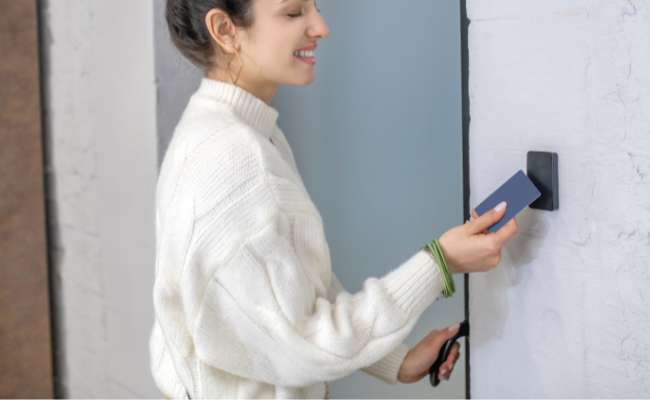We get questions about this all the time. What are they, how do they work, can they be duplicated…the list goes on. Let’s cut down the facts about what security credentials are and what is applicable to your customer. An important thing to remember is why we are deploying a security system. Are we keeping honest people honest, or are we protecting high value property? The price will correlate with the level of security.
The format lengths described how the card number is used. It will typically correlate with the security of the credential. The longer the bit the harder it is to duplicate. For more detail, check out our white paper on this topic. It is quite a labyrinth of detail, hopefully you and the team find this useful!
26-bit Format
This is an open format, meaning that each 26-bit card is read the same with their 5 digit card number and 3 digit facility code. The bit length refers to the number of bits if the number was broken down into binary code.
There are 16.7 million unique cards for the 26 bit format. There are two numbers on the card that make it unique: the facility code (0 – 255) and card number (1 – 65,535). These numbers are unencrypted and are passively transmitted between the card and the reader (more about this in frequencies). The area code of the card is in the same place every time, just like it is with your phone number. This is why the 26 bit format is standard.
Most systems are currently in this format and most people have no idea. It works well and these cards will work with almost any prox reader on the market, including Iclass and multiclass readers.
Other Bit Formats
When you move away from the “standard” format there are hundreds of different formats for varying bit lengths. The placement of the area code is not going to be in the same location every time because each manufacturer can place them differently. Each manufacturer will have their own format that they follow, one might place it in the middle of the number string while another might place it at the end. Higher bits will also put in a “parity bit” (a bit that authenticates the card).
This is where the world is moving and corporate 1000 cards are a common use of this. HID has really built an enterprise around these cards, but others you might hear about in this space are Zebra Gen2, SEOS cards, and MIFARE DESFire.
If you really want to get into the technical info, we have a couple white papers that explain the entire kit and caboodle about formats, frequencies, and reader to board communication. Prefer talking it through? You can give us a call or book a meeting below and we’re happy to chat with you about it!

